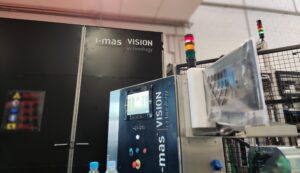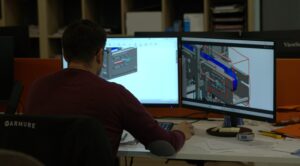Dgital transformation ihas reached all corners of the industry, and one of the most relevant advances in recent years is the application of artificial vision in industrial waste management.
This technology, which combines cameras, sensors and image processing algorithms, makes it possible to automate and improve key processes such as sorting, quality control and traceability of waste. The result? More efficient, sustainable and cost-effective management.
What does machine vision bring to waste management?
Industrial waste management is a complex task, involving sorting, weighing, traceability, regulatory compliance and economic efficiency. Human error, lack of visibility and poor real-time control often lead to inefficiencies and cost overruns. This is where machine vision comes into play.
Today, smart cameras and image processing algorithms can automatically identify and sort different types of materials (plastics, metals, paper, hazardous waste, etc.) with an accuracy far superior to that of humans. In addition, they can be integrated with control systems or robotics to automate the separation, weighing or referral of waste to its corresponding treatment.
For example, systems based on deep learning can differentiate between types of plastics that are compatible for recycling or detect objects that should not be in a given stream. This not only improves efficiency, but also reduces the amount of mismanaged waste that ends up in landfills or incinerators.
In addition to sorting, machine vision makes it possible to monitor waste collection, transport and storage processes with high precision. The systems can detect anomalies – such as spills, improper mixing or inadequate fill levels – and generate automatic alerts for immediate action.
These systems not only increase efficiency, but also reduce occupational risks and improve traceability by recording in real time the entire waste stream generated by each production line or industrial process.
Real use cases in industrial environments
Some examples of the use of machine vision systems in industrial environments include:
- Automated recycling plants, where materials are identified by shape, color or spectral reflectance to optimize sorting.
- Waste control in production lines, automatically detecting if a product or container has been rejected, damaged or wasted, and generating automatic alerts.
- Hazardous waste management, where machine vision can verify that waste is correctly labeled and stored, avoiding legal and environmental risks.
- Monitoring of container filling, with systems that warn in real time when a container needs to be emptied or changed.
These solutions can be combined with IoT platforms or SCADA systems to create intelligent and integrated management environments, optimizing resources and reducing environmental impact.
Sustainable optimization with machine vision systems
Implementing machine vision solutions involves an initial investment in hardware and software, but the benefits quickly translate into operational savings, reduced penalties, productivity improvements and regulatory compliance. In addition, these technologies enable companies to align with the Sustainable Development Goals (SDGs) and reinforce their commitment to the circular economy.
In a context where environmental regulations are increasingly demanding, having automated systems that guarantee the correct treatment of waste is no longer a competitive advantage, but a strategic necessity.
In short, we can say that machine vision has become a key lever for innovation in industrial waste management. From intelligent sorting to real-time control, this technology offers practical, efficient and scalable solutions that help companies become more sustainable and competitive.
In the engineering department of i-mas we are specialized in the combination of artificial vision technologies, deep learning and industrial automation in production processes, which allows us to offer integral solutions adapted to the specific needs of each client.
Want to learn more about our services? Contact us or visit our projects section.



